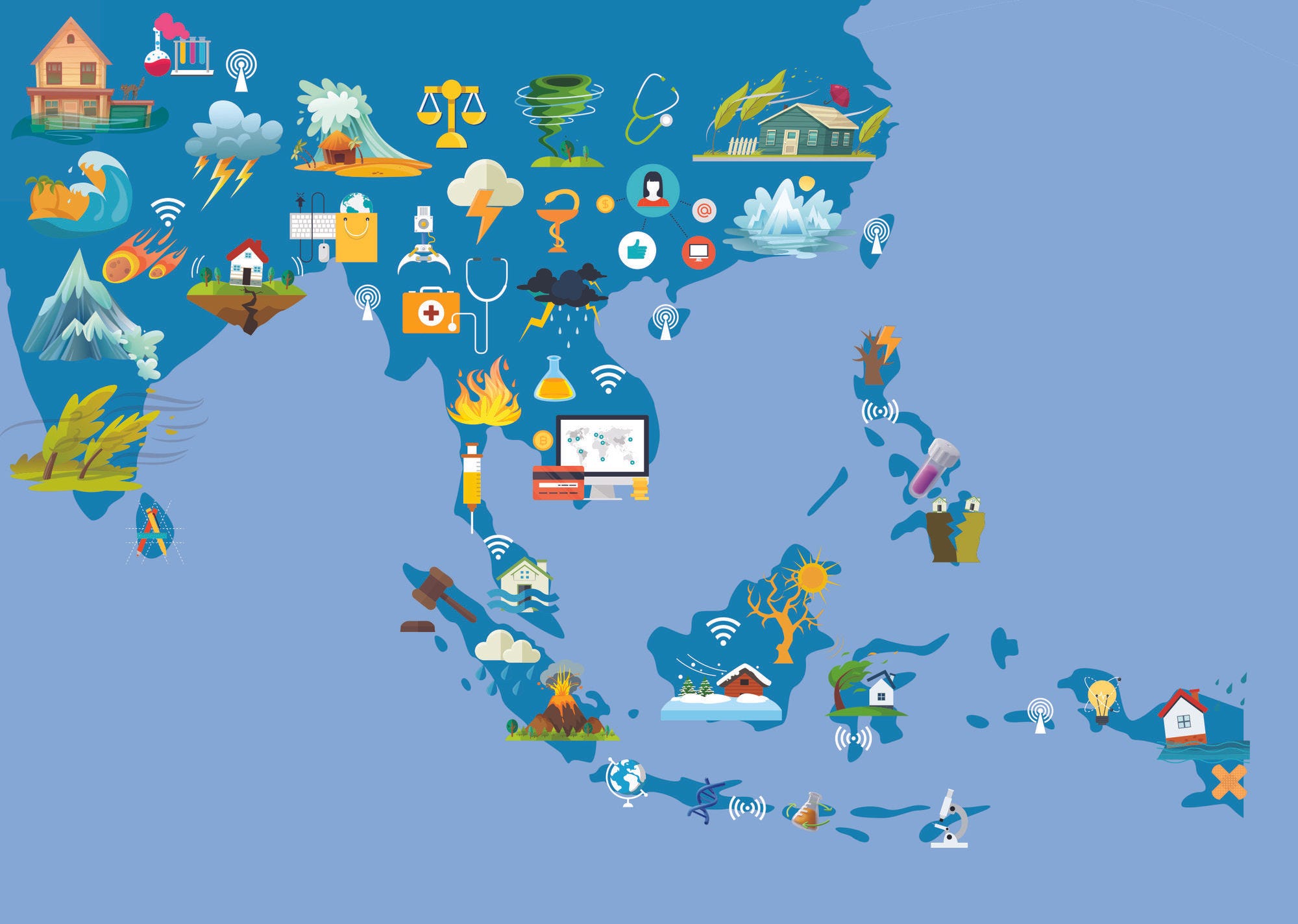Thailand is a fast emerging country that aspires to become a high-income economy by 2037. Strong growth has enabled the country to join the group of upper-middle-income economies in the early 2010s and to perform well in many areas. At the same time, the benefits of prosperity have not been shared evenly nationwide and the economic development has taken a toll on the environment. Moving forward, Thailand needs to master three transitions to build capabilities and sustain faster but also more inclusive economic growth: enabling further growth by unlocking the full potential of all Thailand’s regions; developing more effective methods of organisation and collaboration between actors and levels of government; managing water security and disaster risk. Based on the previous volume’s in-depth analysis and policy recommendations, this report suggests a set of actions to support these transitions. The actions focus on the North of Thailand, one of the most diverse and yet poorest regions of the country.
Multi-dimensional Review of Thailand

Abstract
Executive Summary
Thailand has made impressive progress over the past decades, but needs a new model of growth to move forward and achieve its development objectives. On the one hand, strong growth enabled the country to join the group of upper middle-income economies in the early 2010s and to perform well in many areas. Poverty has plummeted and well-being improved considerably, notably with respect to health and education. On the other hand, few regions have fully benefited from growth and economic development has taken a toll on the environment. According to Volumes 1 and 2 of the Multi-dimensional Review of Thailand, the country needs to tackle regional inequality, improve multi-level governance and better manage water resources and disaster risk in order to achieve more inclusive and sustainable economic growth.
This volume of the Multi-dimensional Country Review (MDCR) builds on the results of the second phase of the MDCR and provides concrete actions for policy implementation. These actions could help achieve the three transitions that the country needs to move to the new level of development: moving towards a more regionally balanced growth path, simplifying multi-level governance and improving the management of water resources and disaster risk. The report moreover provides a scorecard for tracking policy implementation. To make actions as concrete as possible, the Action Plan focuses on the North of Thailand, one of the fastest growing, most diverse and yet poorest regions of the country.
The Action Plan is the result of a policy dialogue that mobilised key stakeholders from the North. Participants to workshops in Chiang Rai and Chiang Mai prioritised issues and proposed actions to operationalise recommendations of the earlier MDCR reports.
Creating successful strategies is a process of trial and error that requires the collaboration of many players. The following actions should thus be read as a guide to such a process. The scorecard in Chapter 4 of this report proposes a set of indicators for measurement of performance throughout the process. In combination this action plan and the scorecard can thus help to transform the North of Thailand into a “Policy Lab” where innovative actions and ideas for regional development can be tested.
Developing the potential of Thailand’s North
In spite of remarkable growth rates, the North of Thailand remains one of the less developed and most unequal regions of the country. Certain provinces and areas are transforming into thriving hubs for manufacturing, logistics (connectivity with the Greater Mekong Subregion) and tourism services, while others lag behind and rely on rural activities with low productivity.
Several capabilities are key for the Northern Region: creating an effective strategy and having strong LAOs to support it, Metropolitan areas that drive the region’s development, and universities and colleges that act as key drivers of development.
Three conditions are key to getting regional development strategies right: 1) placing local innovation and discovery in the driver’s seat 2) a strong focus on performance and 3) co-ordination to ensure coherence of plans and policies.
“Smart Labs” are proposed here for a strategy creation process. They build on sound data analysis and bring together private and public agents to identify and agree on the key development opportunities of a province or a group of provinces. The purpose of Smart Labs is threefold. First, the knowledge and views of participants complement the results of the data analysis, which may not capture local cultural nuances and specificities driving local comparative advantage. Second, they provide participants with an opportunity to agree on the bottlenecks that the central and local government need to remove to unleash the potential of comparatively advantageous sectors. Lastly, the Smart Labs are a crucial step to ensure that all stakeholders in charge of the implementation of regional development strategies are actually involved in the planning process.
To be effective and coherent, smart regional strategies need to account for the diverse ambitions, contexts and assets within the North. Data analysis can help identify optimal provincial clusters, allowing new regional development strategies to leverage on local stakeholders’ capacities and targeting areas with common potential and challenges.
Once a deep strategy is created, implementation requires the effective empowerment of Local Administrative Organisations (LAOs) and their fiscal autonomy. Based on workshop participants’ insights, the Action Plan proposes to increase LAOs’ own share of revenues, especially by strengthening the tax base for the building and land tax. LAOs should allocate more resources to continuous training and peer learning among local administrators, in order to build local fiscal capacity. Moreover, the intergovernmental grant system needs a new design.
Northern cities may play a pivotal role and become key drivers of regional development and innovation. To be effective, urban policies need to be well-targeted and accountable. Local authorities could define functional urban areas, which are based not only on the residents, but also on the actual urban users – such as, residents of the hinterland commuting daily to the core urban centres for work-related or education purposes. Metropolitan authorities with directly elected mayors could help improving accountability of decisions taken in the newly-defined functional urban areas. To further strengthen accountability, northern cities could experiment participatory budgeting and other forms of participation of voters to local budgeting.
The sustainable development of cities and their surroundings depends also on the infrastructure connecting urban with rural areas. Local and provincial governments need to create transport authorities for every functional urban area. They could moreover rely on traditional surveys and big data to benchmark the quality of urban infrastructure, and to assess current and future needs.
Finally, local universities are an essential catalyser of innovation if they promote entrepreneurship education and support existing entrepreneurs. Following best practices from OECD countries, the Action Plan proposes that Northern universities integrate technical education with entrepreneurship education, enjoy more incentives and space for autonomous initiative, create a network to support start-ups, and explore partnerships with local enterprises.
Improving the management of water security in the North
In order to improve the management of water security, the North needs a national strategy that sets the vision and guiding principles for the water sector, and empower local and provincial actors. The strategy should lay down the framework that regional and local actors would use to develop capacity, exploit local knowledge, better prioritise and implement action. While designing the strategy, authorities should scan the current governance, and identify gaps and overlaps with regard to policy, objectives, information and capacity. This review would facilitate the development and optimisation of an action plan.
Robust evidence should drive the design of the strategy and its implementation. In this regard, Thailand should abandon the current decentralised and fragmented data collection with limited exchange between agencies. Relevant agencies and ministries should centralise key information on access and provision of water, quality, and impact of floods and droughts with the full collaboration of local administrators. Using data to prioritise action would facilitate the identification of the level of risk and priorities at the national and local levels. A revised list of policy tools, deployed to achieve national and regional objectives, should go hand-in-hand with the creation of this data catalogue.
A robust financial plan should accompany the national strategy to provide the North with appropriate and realistic infrastructure investments. While the national strategy maps infrastructural gaps, the robust assessment of long-term capital, operation and maintenance budget helps prioritise the infrastructural policies that can answer to local needs realistically and effectively.
In the same series
Related publications
-
 9 November 2024
9 November 2024 -
 11 October 2024
11 October 2024










